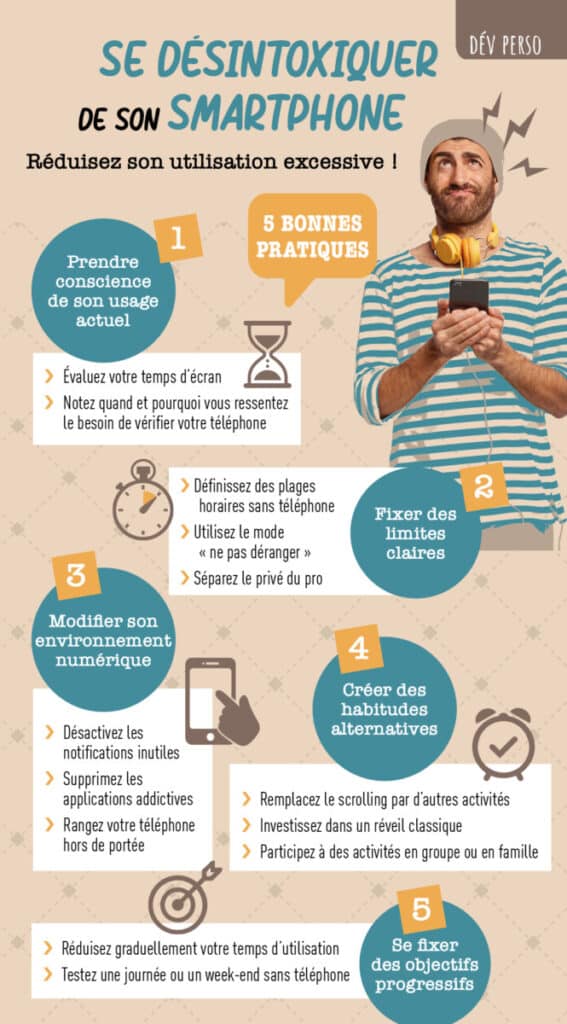Connected devices are a big part of our daily lives. Detoxing from your smartphone is a major challenge. Here are 5 best practices for reducing the excessive use of your smartphone.

1. Be aware of your current usage
Analyse your screen time: use integrated applications such as Screen Time or Digital Wellbeing to understand how much time you spend on your phone and on which applications.
Identify your triggers: make a note of the times when you feel the need to check your phone (boredom, notifications, stress, etc.).
2. Set clear limits
Define times when you won't be using your phone. For example: don't use it during meals or for an hour before going to bed.
Use the "do not disturb" or "focus" mode: activate it to limit interruptions by notifications.
Schedule screen-free breaks: use techniques such as time blocking to schedule phone-free time during the day.
Separate the private from the professional. Switch off your work phone as soon as you leave work and vice versa. In an emergency, people will always find a way to reach you.
3. Modifying your digital environment
Deactivate unnecessary notifications. What could be more effective than stopping this constant reminder of what's happening on your various networks, and sometimes an alert just for advertising? Keep only those that are essential (calls, important messages).
Keep your phone out of reach: put it in another room or in a drawer when you're concentrating.
Remove addictive applications: if possible, uninstall or restrict access to time-consuming applications (such as social networks).
4. Create alternative habits
Keep your hands and mind busy: replace scrolling with enriching activities such as reading, sport, meditation or a creative activity.
Invest in a classic alarm clock: this will prevent you from using your phone as an alarm clock, and therefore falling into the screen trap first thing in the morning.
Plan screen-free time with others: take part in group or family activities that don't require technology.
Read also
5. Set progressive objectives
Gradually reduce the amount of time you use it: cut back by 10-15 minutes a day or a week.
Do a phone-free challenge: try spending a whole day or weekend without a phone to see how you feel.



